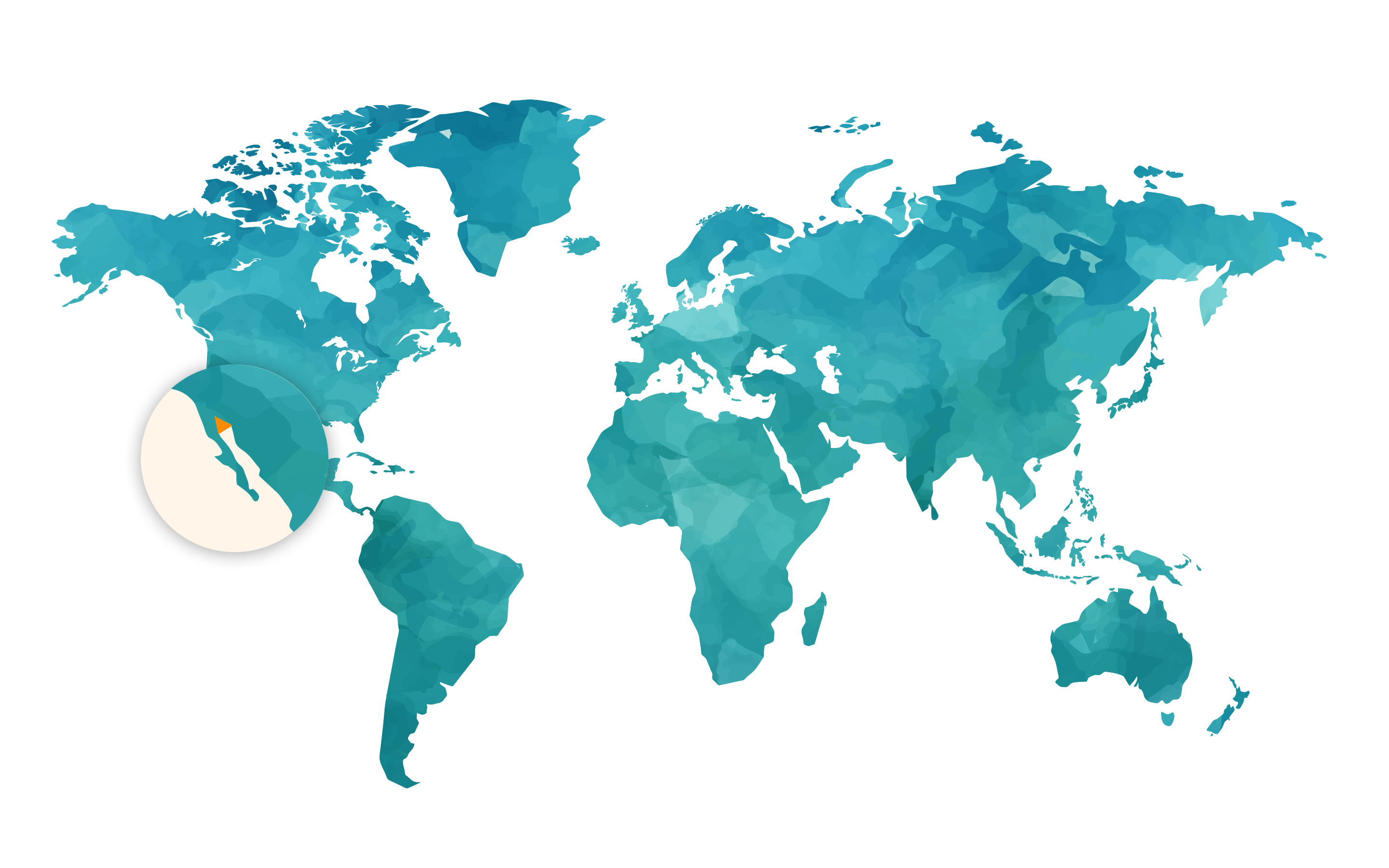- Kingdom:
- Phylum:
- Class:
- Order:
- Infraorder:
- Family:
- Genus:
- Species:
- Animalia
- Chordata
- Mammalia
- Artiodactyla
- Cetacea
- Phocoenidae
- Phocoena
- P. Sinus
Weight 70-110kg, max length reported 2.4 meters
Between 1997 and 2019, gillnets killed hundreds of vaquitas. Their estimated population dropped from approximately 600 to fewer than 20 animals.
The vaquita porpoise is truly a unique species adapted to a curious marine habitat. All porpoises live in highly productive waters, which are typically found in northern areas. Vaquitas (Phocoena sinus) have made their home in the northern Gulf of California thousands of miles from their nearest relative in Peru. Despite being next to one of the hottest deserts in the world, the waters where vaquitas live are not clear, tropical waters but waters clouded with life because of the strong currents and nutrients stirred from the muddy bottom deposited by thousands of years of runoff from the Colorado River. Vaquitas sport an extra tall dorsal fin and long flippers that likely help them dissipate the heat.
Photo: Thomas Jefferson
The vaquita’s entire range is about 4,000 km2—nearly the size of the state of Rhode Island.

Photo: VaqutiaCPR
The NMMF is a key partner in VaquitaCPR. VaquitaCPR (Conservation, Protection, & Recovery), a consortium comprised of marine mammal scientists, veterinarians, and biologists from around the world that came together to attempt to save the vaquita porpoise from extinction. In 2017, the VaquitaCPR team set out on a bold rescue mission aimed at temporarily protecting vaquitas under human care until their natural habitat was safe for them to return.
In the wake of VaquitaCPR field operations, the team launched Project Esperanza with an aim to provide the species with a chance at survival, while also supporting the good work of local fishers and organizations working together to make a difference. Project Esperanza supports the multi-institutional gillnet removal efforts and acoustic monitoring efforts in the Upper Gulf of California, and is urgently working to raise global awareness of the vaquita crisis.
VaquitaCPR’s conservation efforts are featured in the new National Geographic documentary, Sea of Shadows. From executive producer Leonardo DiCaprio and director Richard Ladkani, also known for The Ivory Game, Sea of Shadows follows undercover investigators, scientists, journalists, and the Mexican Navy on their desperate last-minute effort to rescue the Earth’s smallest whale from extinction. The documentary crew spent a month filming with the VaquitaCPR team in San Felipe, Mexico to capture every possible moment of the ground-breaking conservation effort.
Your contribution will directly support the collaborative enhancement of existing local rescue efforts, specifically through the integration of technical veterinary and health assessment support, that will inform conservation actions to increase the survivability of this species.
To learn more about the VaquitaCPR conservation efforts, please visit: www.vaquitacpr.org